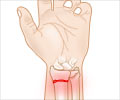Athletes in high school who are back on the field within 60 days of suffering a concussion experience significant regression in their abilities.

The findings, published with the results presented more generally, were placed online ahead of print in the journal Medicine & Science in Sports & Exercise. The conclusions emerged after a closer examination of data detailed in an earlier study in the same journal in 2013. That study showed that 25 concussed high-school athletes had compromised abilities to focus and switch tasks for up to two months after their injuries. Assessments were done within 72 hours of injury and one week, two weeks, a month and two months later. Six of the athletes did not return to action in the study period and were excluded in the new analysis.
In the course of the original research, the athletes reported on when they had been cleared to resume practicing. At 28 days post injury, data suggesting a regression began to emerge, said principal investigator Li-Shan Chou, a professor in the UO Department of Human Physiology and director of the Motion Analysis Laboratory.
"We had seen this same type of curve in an earlier study of college athletes," he said. "We didn't have any evidence linking it to a return to activity, but we did discuss that possibility, because we knew that they usually were permitted to return to practice two weeks after a concussion."
The current practice for allowing most athletes to return to activity is mostly based on self-reports of symptoms and individual assessments of cognition or motor function.
For the new analysis, lead author David Howell, who received a doctoral degree at the UO in June and is now at Boston Children's Hospital, confirmed with medical staff and team trainers when the athletes had returned to activity. He focused on these athletes' individual data, comparing their return-to-activity status with the results of three tests: simply walking; separately doing simple computerized mental exercises; and a combination in which they walked and performed mental exercises simultaneously.
Advertisement
In the dual task exercise, the athletes, while walking, heard a spoken word and identified whether it was delivered in a low- or high-pitched tone. In other variations, the subjects' were told, as they began walking, to recite months backward from October or subtract 7 repeatedly, beginning from 100.
Advertisement
Control subjects were healthy individuals of the same sex, body size, age and sport of the injured athletes. The research focused on frontal regions of the brain responsible for working, or short-term, memory and executive function.
Source-Eurekalert











